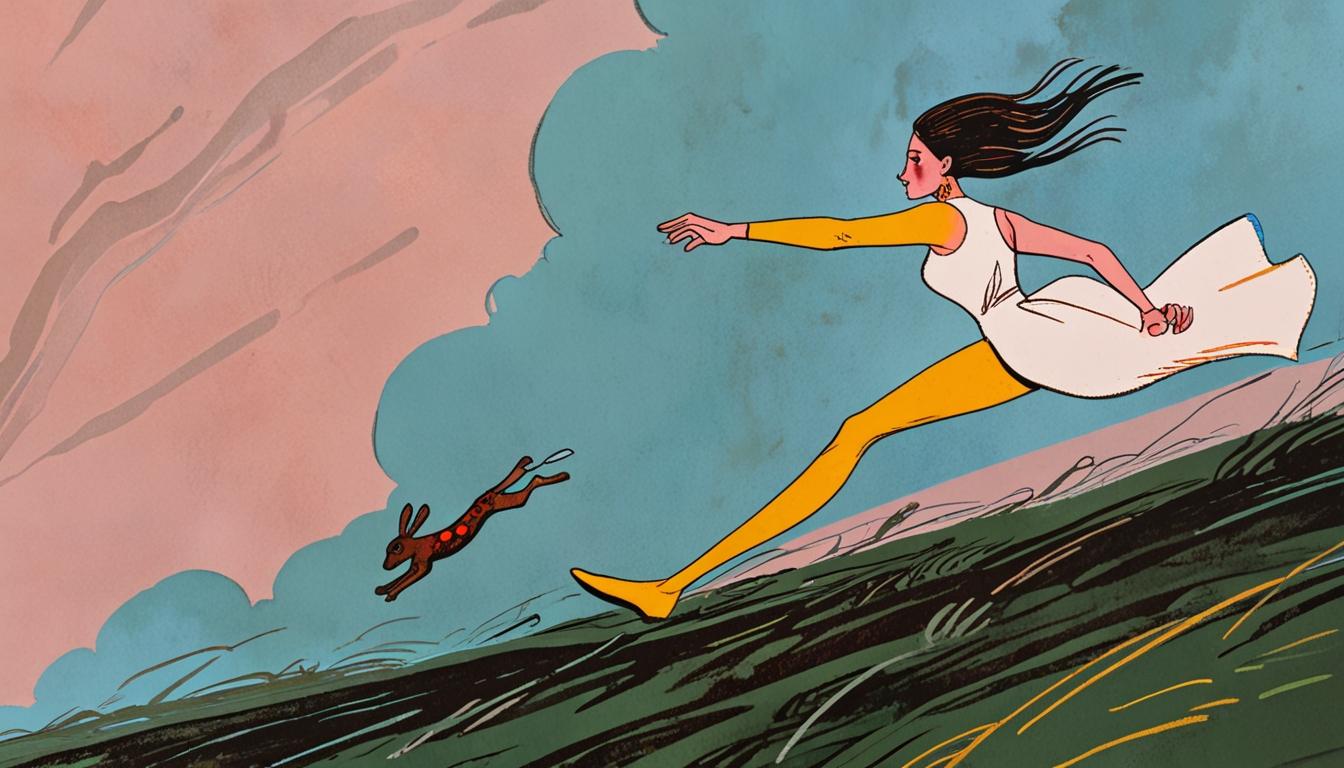Desmond Morris Unveils Long-Lost Surrealist Film, "Time Flower"
In a remarkable intersection of art and life, celebrated zoologist and surrealist artist Desmond Morris is set to unveil his long-buried film, Time Flower, at the University of Birmingham’s Flatpack film festival. Created when Morris was just 22 years old, this 10-minute black-and-white film has remained hidden in his archive for nearly 75 years. It features his late wife, Ramona, and serves as a testament to Morris's early explorations in surrealism, inspired by iconic works such as Salvador Dalí and Luis Buñuel’s Un Chien Andalou.
The film opens with a striking scene: a woman lies facedown on a moor, pursued by Morris, an aesthetic chase marked by surreal imagery and implications of love and desire. “While I was studying zoology at Birmingham,” Morris reminisces, “I joined a club that showed films—and one of the first was Un Chien Andalou. It shocked, startled, and excited me. That was when I decided to make my own surrealist film.” This initiation marked the beginning of a journey that would intertwine personal and artistic narratives.
At 97, Morris reflects not only on his artistic journey but also on his passionate relationship with Ramona, whom he met in 1949. The film is peppered with symbols of their love story, including a pivotal scene where Ramona, in a vivid display of spontaneity, leaps from a car bonnet to catch a wild rabbit. This moment, although initially borne from jest, eventually prompted Morris’s proposal. “If somebody’s prepared to be thrown off my car to catch a rabbit for me, then I’ve found the girl I want to marry,” he recalls, underscoring the interplay of courage and affection that defined their bond.
Despite its rudimentary production values, Morris describes Time Flower as possessing an “irrational intensity” that resonates with audiences, revealing a complex layer of beauty despite its technical flaws. At the film festival, it will be screened with its original Prokofiev accompaniment, followed by a new live score, enriching the experience for viewers. Morris, who remains creatively active—painting nightly—has agreed to showcase Time Flower as part of the University’s 125th anniversary celebrations, marking an important chapter in his life’s work.
The narrative of Time Flower delves deeper than mere pursuit; it reflects the complexities of desire and fantasy. Morris explains, “While he’s chasing her, she has fantasies and he has fantasies, and these are what’s going on in their unconscious minds during the chase.” The film serves as a canvas for exploring not just romantic pursuit but also the profound, often ineffable, inner lives of its characters—replicated in Morris’s surrealist paintings, which still captivate audiences today.
Though Morris acknowledges that Time Flower lacks the sophistication of contemporary cinema, he finds solace in its rawness, stating, “I hadn’t seen it myself for a long time, and I thought, ‘Well, it may be crudely and poorly produced but it has a kind of irrational intensity that I like.’” This acceptance marks a poignant acknowledgment of the passage of time, especially following the death of Ramona in 2018, a loss that has shaped his reflections on their 69-year relationship.
Furthermore, while some may draw parallels between the film’s underlying themes and Morris's landmark work, The Naked Ape, he asserts a distinct separation between his zoological research and artistic endeavours. “Apart from the rabbit, there wasn’t much zoology,” he insists. Yet, his lifelong fascination with the animal kingdom, particularly its mating rituals, continues to inform his artistic sensibilities. “There’s a great deal of sexual implications in the film, if not explications,” he notes, cleverly intertwining his dual interests.
In a broader context, Time Flower represents more than a personal artefact; it serves as a reflection on memory, love, and the dynamic nature of creativity. Morris observes a growing interest in his surrealist work, a phenomenon he attributes in part to the inevitabilities of life. “I think it’s because they know that when I die, which can’t be very far off, my prices will increase,” he quips, a testament to the sometimes morbid economics of the art world.
As Morris prepares to share Time Flower with the public, he embodies the quiet resilience of a man navigating the late chapters of a rich and intricate life. This unveiling serves not just as an artistic event but as a celebration of love’s enduring legacy—a powerful tribute to the bond he shared with Ramona, immortalised through a film that has finally emerged from the shadows.
Reference Map:
- Paragraph 1 – [1], [2]
- Paragraph 2 – [1], [4]
- Paragraph 3 – [2], [3]
- Paragraph 4 – [1], [5]
- Paragraph 5 – [4], [6]
- Paragraph 6 – [1], [3]
- Paragraph 7 – [2], [5]
- Paragraph 8 – [1], [6]
Source: Noah Wire Services
